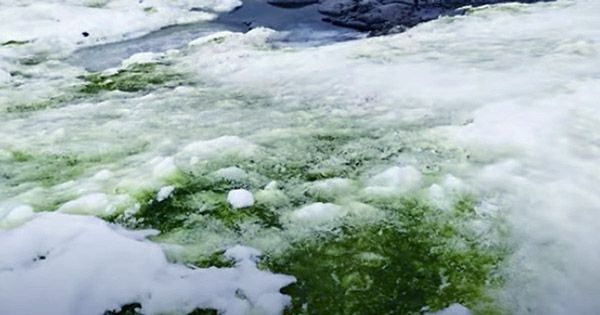Antarctica is a polar continent, but it is not just a vast expanse of ice and snow. Algae, lichens, and algae all grow in coastal areas. The continent, however, like other planets, is experiencing higher temperatures due to the climate crisis and this has resulted in algae spreading more than ever before.
Now, scientists have created the first large-scale map of microscopic algae flowers on the Antarctic Peninsula. Researchers say that this “green snow” is likely to spread as global temperatures rise.
The British team at Cambridge University and the British Antarctic Survey used the European Space Agency’s Sentinel 2 satellite to map algae flowers. Microscopic algae can bloom on the surface of the ice, mixing it with green or orange, or even red. Why do you think this is a bad thing: the rock that sits on the surface of the snow hinders its ability to reflect sunlight, instead of absorbing it and increasing the chances of melting? White snow reflects about 80 percent of the sun’s radiation, while green snow reflects only about 45 percent.
In nature communications, the team reported 1,679 individual blooms across a combined 1.9 square kilometers across the peninsula, two-thirds of which were on small low-altitude islands. The fox blooms only within the temperature range, blooming around the point where the water freezes, which occurs between November and February. It cannot survive if it is too hot or too cold. The Polar Regions are warming faster than anywhere else on the planet, so some of these islands could lose their summer snow cover, while the coastal regions of the continent will see a significant increase in algae flowering in the coming decades.
Lead author Dr. Andrew Gray, a researcher at the University of Cambridge and NERC Field Spectroscopy Facility, Edinburgh, said in a statement, “As Antarctica warms, we anticipate that the overall amount of snow algae will increase, as the loss of small island patches of algae scattered over higher lands will exceed a significant amount of damage.”
Flowers are affected by birds and mammals living in Antarctica and especially defecate, which are a source of nutrients. They found that 60 percent of the flowers identified were within 5 kilometers (3.1 miles) of the penguin colony, as well as near other bird nesting sites, and where seals rested on the coast. The team further estimates that these flowers, which act as a carbon sink, remove 479 tons of atmospheric CO2 each year – the equivalent of the emissions of 486 aircraft traveling between New York and London.
Researchers plan to observe the further spread of the algae in future research, including conducting fieldwork on the southern continent along with other algae and how they are monitoring green vegetables in the southern continent over the next few years. “I think in the future we will get bigger flowers,” Gray told the Guardian. “We need to run the numbers before we know if it has a significant impact on the carbon budget or organic albedo.”














